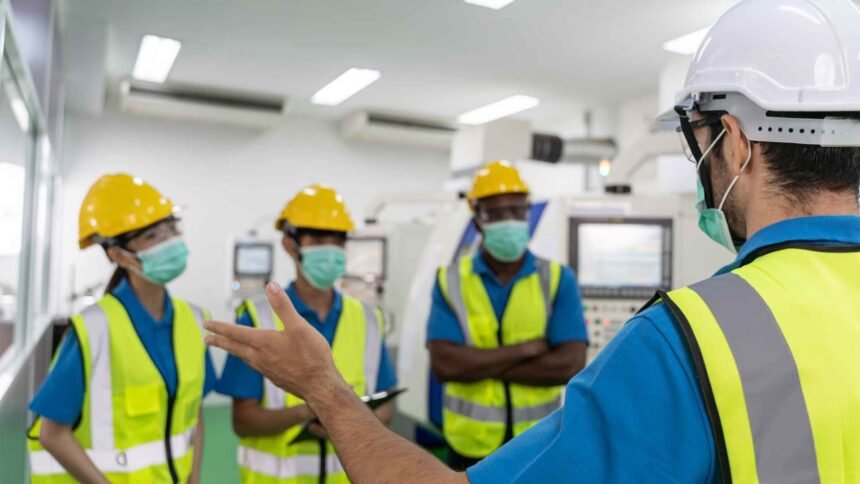Navigating the Risks of Road Building
Road construction shapes our world, connecting communities and boosting economies. Yet, workers face daily dangers that demand constant vigilance. In 2025, as infrastructure projects surge across the U.S., safety emerges as the top priority. Industry leaders stress that cutting corners leads to tragedy, while smart practices save lives and money.
The Human Cost: Alarming Statistics and Real-World Impacts
Construction sites pulse with activity, but hazards lurk everywhere. The Bureau of Labor Statistics reports a rise in both fatal and non-fatal injuries on construction sites in 2025 compared to 2023. Falls, slips, and trips account for 31% of injuries, with falls alone causing many deaths. In road work zones, transportation incidents kill over 100 workers annually, often from vehicles striking pedestrians.
Consider the hidden risks beyond the site. WorkSafeBC highlights that motor vehicle incidents happen every 2.3 workdays in construction, underscoring road safety’s broad reach. A recent study by the Associated General Contractors of America reveals 64% of highway contractors have faced work zone accidents. These numbers aren’t just data—they represent families shattered by preventable loss. Dennis Howard, a safety expert at RDO Equipment Co., shares stories from job sites where heat, traffic, and fatigue turn routine days deadly. His emphasis? No shortcuts.
Regulatory Advances: New Rules Pave Safer Paths
Governments act swiftly to curb these dangers. The Federal Highway Administration (FHWA) issued a new rule in late 2024 requiring positive protection devices like concrete barriers in high-speed zones. This update shields workers from intrusions and mandates better traffic control.
The 2025 Progress Report on the National Roadway Safety Strategy celebrates progress: Traffic fatalities dropped for 10 straight quarters, with 85% of 47 planned actions completed. The goal? Zero deaths. National Work Zone Awareness Week in April 2025 amplified this message, urging drivers to “Respect the Zone So We All Get Home.” States like Wisconsin and Indiana joined, posting signs and sharing videos to educate motorists.
Internationally, the World Health Organization spotlighted road safety at a major transport forum in May 2025, noting one-third of global road deaths are tied to corporate chains. These efforts show regulators pushing industries to prioritize lives over speed.
Innovations in Action: Technology Takes the Wheel
Companies innovate to outpace risks. Smart work zones use sensor-equipped cones that alert teams to dangers, reducing fatigue and proximity threats. Digital twins—virtual models of sites—spot design flaws before ground breaks, preventing utility strikes.
Lytx’s 2025 Road Safety Report reveals rising collision rates but praises coaching programs that cut risks by addressing behaviors like speeding. In Texas, TxDOT studies how road design influences driver psychology, using subtle cues to prevent crashes. Drones and virtual reality training prepare workers for hazards, while automated gear limits human exposure.
FJDynamics outlines 12 essential rules for 2025, blending tech with basics like PPE and hydration. These tools don’t just comply—they transform sites into safer, smarter spaces.
The Business Angle: Safety as a Smart Investment
Safety isn’t charity; it’s sound business. Injuries cost billions in medical bills, lost productivity, and lawsuits. DiSandro & Malloy, P.C., advocates for injured workers during Construction Safety Week 2025, highlighting how prevention cuts claims.
Firms like Abertis discuss sustainable materials and designs with global partners, boosting efficiency while enhancing safety. ISHN predicts mental health initiatives will join physical safety in 2025, recognizing that well workers perform better. Investing here yields returns: fewer delays, lower insurance, and stronger reputations.
Looking Ahead: Building a Legacy of Protection
As 2025 unfolds, road construction evolves with safety at its core. Challenges remain—budget strains, resistance to change—but progress inspires. Workers like those in Midland County remind us via campaigns: Slow down, stay alert.
Safety isn’t a detour; it’s the main route. By embracing regulations, tech, and a human-first mindset, the industry paves a brighter, safer future. After all, every smooth road starts with protected hands building it.









